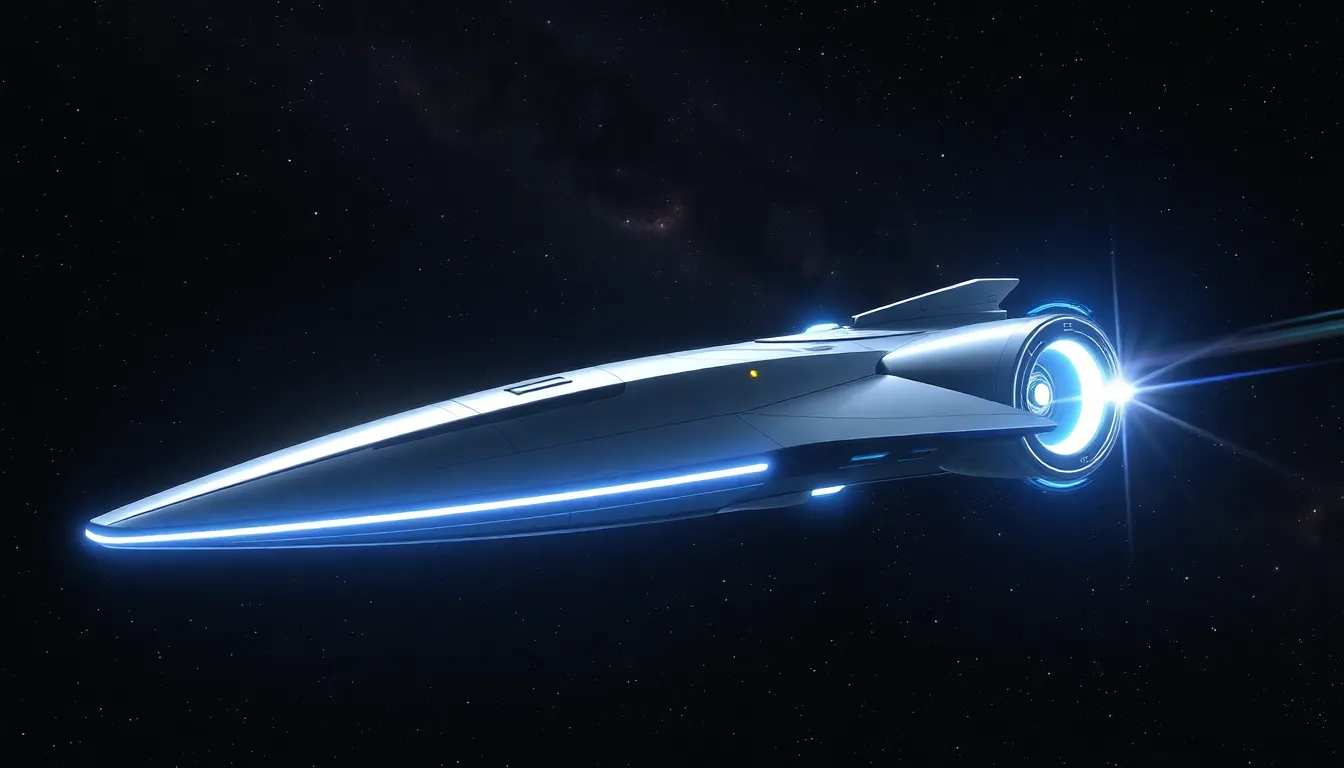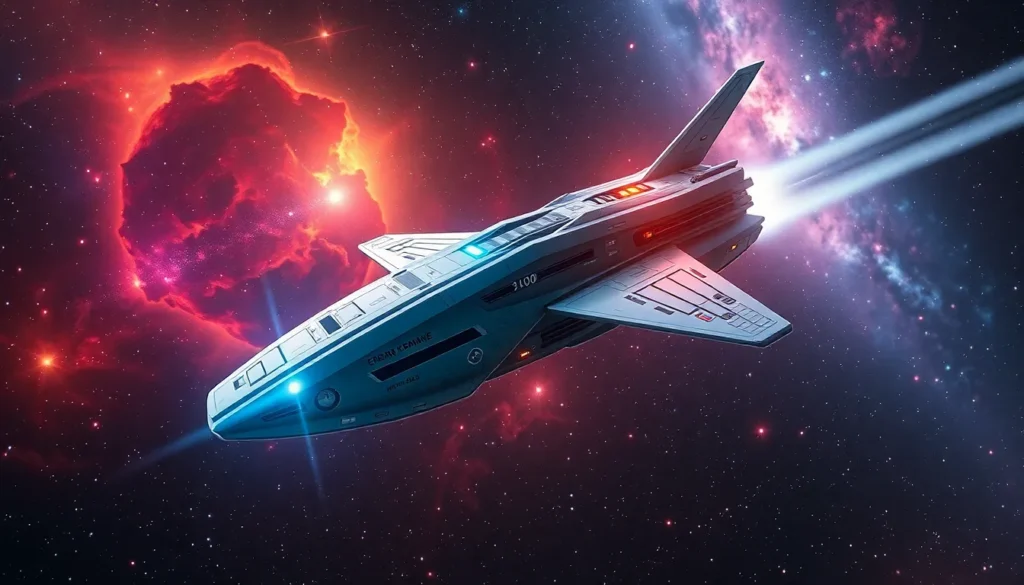Imagine a future where humanity explores distant stars and galaxies, venturing beyond the confines of our solar system. Interstellar travel has long been a dream of scientists, writers, and dreamers alike. With advancements in technology and a deeper understanding of the universe, the possibility of traveling to other star systems is becoming more tangible.
This fascinating concept raises numerous questions about the feasibility, methods, and implications of such journeys. From warp drives to wormholes, the theories surrounding interstellar travel spark curiosity and ignite the imagination. As researchers continue to push the boundaries of what’s possible, the idea of reaching for the stars may not be as far-fetched as it once seemed.
Table of Contents
ToggleOverview of Interstellar Travel
Interstellar travel involves the exploration of space beyond the solar system. It focuses on reaching distant stars and galaxies, a concept that has fascinated scientists and enthusiasts alike. Recent advancements in astrophysics and engineering strengthen the feasibility of such journeys.
Current technology relies heavily on chemical propulsion mechanisms. However, limitations in speed and fuel efficiency hinder long-distance voyages. Concepts like warp drives propose bending space-time, potentially allowing ships to traverse vast distances rapidly. Studies suggest that a warp drive might cover light-years in mere days, transforming interstellar travel from theory to possibility.
Wormholes, another intriguing concept, offer shortcuts through space-time. These theoretical passages could connect different points in the universe. While still speculative, they generate interest and research efforts in the pursuit of practical applications.
Innovative propulsion methods continue to emerge. Potential advancements include laser propulsion systems and fusion drives. These technologies promise increased speed and efficiency compared to conventional methods. Their development represents a significant step toward making interstellar travel more attainable.
The implications of interstellar travel extend beyond mere exploration. Such journeys raise questions about colonization, sustainability, and the ethical considerations of interfacing with potential extraterrestrial life. As humanity seeks to expand its horizons, interstellar travel presents opportunities and challenges that require careful consideration.
The Science Behind Interstellar Travel

Interstellar travel relies on complex scientific principles and theories. As humanity’s understanding of physics evolves, so do the possibilities of reaching distant star systems.
Theoretical Foundations
Theoretical models underpinning interstellar travel include concepts such as general relativity and quantum mechanics. General relativity, formulated by Albert Einstein, suggests that massive objects warp space-time, enabling phenomena like wormholes. These theoretical passages could connect two distant points in space-time, facilitating rapid travel across vast distances.
Another significant idea is the Alcubierre warp drive. This theory proposes creating a “warp bubble” that contracts space-time in front of a spacecraft while expanding it behind, allowing for faster-than-light travel without breaching the laws of physics. However, this concept requires hypothetical materials with negative energy density, which currently do not exist.
Current Technologies
Current technologies focus primarily on chemical propulsion systems, which, while effective for missions within the solar system, struggle with the vast distances of interstellar travel. Emerging alternatives include:
- Laser propulsion systems: They utilize high-powered lasers to propel lightweight spacecraft, potentially reaching speeds up to 20% of the speed of light.
- Fusion drives: They harness the energy from nuclear fusion reactions, offering a higher thrust and efficiency than traditional engines.
- Solar sails: They capture solar radiation for propulsion, allowing for extended journeys at minimal fuel costs.
Combined, these technologies present innovative pathways toward making interstellar travel feasible, yet significant advancements are necessary to achieve practical application.
Historical Context of Interstellar Travel
Understanding interstellar travel requires examining its historical development and the pivotal theories that shaped its trajectory.
Early Concepts and Theories
Early concepts of interstellar travel date back to the works of science fiction authors in the 19th and 20th centuries. Writers like H.G. Wells and Arthur C. Clarke explored ideas of space travel and time manipulation. Their imaginative narratives inspired scientific inquiry into propulsion technologies. Theoretical physicist Kip Thorne later contributed to the scientific basis of concepts like wormholes. His work on general relativity posed questions about traversable wormholes and their implications for interstellar journeys.
In the 1970s, the concept of the Alcubierre warp drive emerged, proposing a method to achieve faster-than-light travel by distorting space-time. This theoretical model leverages negative energy, a concept not yet realized but offering hope for future advancements in interstellar travel.
Key Milestones in Space Exploration
Key milestones in space exploration mark humanity’s growing capabilities and ambitions. The launch of Sputnik 1 in 1957 initiated the space race, showcasing human ingenuity in achieving orbit. In 1969, the Apollo 11 mission successfully landed astronauts on the Moon, demonstrating the potential for deep-space exploration.
The Voyager spacecraft, launched in 1977, provided crucial data about the outer planets and initiated the journey beyond our solar system. Voyager 1, currently the farthest human-made object, continues to transmit valuable information about interstellar space. Martian missions, including the Mars rovers, further expanded our understanding of potential colonies beyond Earth.
These milestones represent significant steps toward realizing the dream of interstellar travel, motivating scientists to explore advanced propulsion methods and reconsider the feasibility of reaching other star systems.
Future Prospects of Interstellar Travel
The future of interstellar travel holds exciting possibilities, fueled by innovative concepts and ambitious projects. As humanity strives to explore distant stars, several proposed missions and significant challenges emerge.
Proposed Missions and Projects
- Breakthrough Starshot: This initiative aims to send tiny spacecraft, called StarChips, to the Alpha Centauri system at 20% of the speed of light using light sails propelled by powerful Earth-based lasers. The project seeks to achieve a 20-year travel time, offering valuable data on interstellar exploration.
- Icarus Interstellar: This research organization focuses on various theoretical models, including fusion drives and antimatter propulsion. Icarus Interstellar’s initiative explores the potential of sending missions to nearby star systems within a human lifetime.
- Project Longshot: This NASA conceptual study envisions an unmanned, nuclear fusion-powered spacecraft able to reach Alpha Centauri in about 100 years. It highlights the potential of advanced propulsion systems, leveraging nuclear reactions to achieve significant speeds.
- Tau Zero Foundation: This organization promotes research and development of technologies for interstellar space travel. Their goals include developing the necessary propulsion systems and understanding the societal impacts of long-duration missions.
Challenges and Considerations
- Technological Limitations: Current propulsion technologies, primarily chemical rockets, lack the necessary speed and efficiency for interstellar journeys. Developing new propulsion concepts requires significant breakthroughs in physics and engineering.
- Energy Requirements: Achieving even a fraction of light speed demands immense energy. Efficient energy sources must be identified and harnessed to support missions that can sustain life over extended periods.
- Time Dilation Effects: Traveling at near-light speeds introduces time dilation, a phenomenon predicted by relativity. Understanding the implications for human travelers on long missions is crucial for mission planning and design.
- Radiation Exposure: Deep space travel subjects crews to high levels of cosmic radiation. Developing effective shielding and life-support systems will ensure the safety and health of astronauts on interstellar voyages.
- Ethical Considerations: Interacting with extraterrestrial life carries ethical responsibilities. Clear protocols must guide potential encounters to prevent harm and ensure respectful engagement with any discovered civilizations.
- Sustainability of Resources: Long-duration missions pose challenges in resource management. Ensuring a sustainable supply of food, water, and oxygen will be vital for the success of interstellar explorers.
The Impact of Interstellar Travel
Interstellar travel carries transformative implications for science, culture, and philosophy. As humanity faces the prospect of exploring distant star systems, understanding these effects becomes crucial to shaping our journey.
Scientific Advancements
Interstellar travel catalyzes significant scientific advancements. Innovations in physics, engineering, and astronomy arise from the pursuit of faster-than-light technologies, such as warp drives and wormholes. Breakthroughs in energy production, like harnessing antimatter and improvements in fusion technology, significantly enhance propulsion efforts. Detection of exoplanets also benefits; enhanced telescopes reveal habitable zones, driving research into planetary systems beyond our solar system. Furthermore, developments in artificial intelligence and robotics aim to support autonomous exploration projects, ensuring safety and efficiency in voyages across vast distances.
Cultural and Philosophical Implications
Interstellar travel evokes profound cultural and philosophical discussions. It triggers reflections on humanity’s place in the universe, prompting questions about existence and purpose. This exploration of the cosmos fuels a renewed interest in science fiction, influencing art, literature, and media representations of space travel. Interactions with potential extraterrestrial civilizations, if encountered, raise ethical considerations regarding communication and coexistence. Additionally, thoughts about colonization introduce debates on responsibility toward newly discovered worlds, including the preservation of ecosystems. Engaging with these cultural and philosophical implications shapes societal perspectives on exploration, ethics, and our collective future beyond Earth.
The journey toward interstellar travel is no longer confined to the realm of science fiction. As humanity’s understanding of the universe deepens and technology advances, the dream of exploring distant stars is inching closer to reality. Innovative propulsion methods and theoretical concepts like warp drives and wormholes offer exciting possibilities for future exploration.
However, this quest brings forth complex challenges that extend beyond mere travel. Ethical considerations and the responsibility of engaging with potential extraterrestrial life must be addressed. As we stand on the brink of a new era in space exploration, humanity’s ambition to reach the stars will require not just scientific ingenuity but also thoughtful reflection on the implications of our journey into the cosmos.




